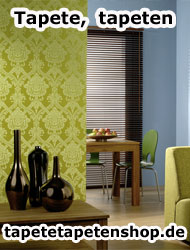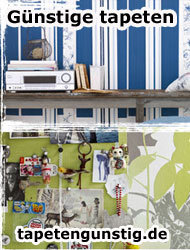|
Hanging wallpaper the traditional way
If your wallpaper is made of paper, pre-paste each length, leave it to soak and then hang so that it overlaps the edge of the next length by about 2-3 mm.
- 1. Check that all rolls have the same batch number so you don’t end up with different colours and shades. Also check to see if the wallpaper should be hung edge-to-edge or overlapping.
- 2. Measure the floor-to-ceiling height and add on 2-3 cm at the top and bottom. Remember to allow for pattern alignment.
- 3. Cut 5-10 lengths at a time. Use a sharp, steel-edged cutting ruler and wallpaper knife with a razor blade.
- 4. Draw an arrow pointing upwards on the back the lengths to show which way they should be hung.
- 1. Place the lengths of wallpaper face down on the pasting table. The top sheet should be edge-to-edge with the table and the bottom sheets pushed slightly further out. This means you won't get paste on the table or on the front of the wallpaper. Place a small scrap of wallpaper or other paper under the ends to avoid getting paste on the table.
- 2. Apply the paste generously and evenly, starting in the middle and working out towards the edges.
- 3. Fold the top sheet toward the middle, ¾ from the top edge and the rest from the lower edge. Put this to one side. Carry on until you have pasted several sheets.
- 4. Leave the lengths of wallpaper to soak for about 10 minutes or until the wallpaper is thoroughly damp.
- 5. Wipe off any excess paste from the front of the wallpaper as soon as possible using a clean, damp sponge. Do not rub, but use plenty of water to remove the paste.
- 1. The first length is hung next to a window, preferably the most southerly window in the room to eliminate shadows along the seams. Attach a plumb line about one wallpaper width from the window or corner.
- 2. Unfold the upper part of the length and attach it at the cornice allowing it to overlap onto the ceiling by a couple of centimetres. Make sure it is vertically straight. If the first length isn’t straight, then the next one won’t be!
- 3. Unfold the lower part of the length and adhere to the wall.
- 4. Use a wallpaper brush to press the length to the wall. Start in the middle and work outwards to the edges. Make sure the wallpaper is firmly pressed to the wall along skirting boards and mouldings.
- 5. Neatly cut away with a sharp cutting tool. Paste on skirting boards or other surfaces should be wiped off using a damp sponge.
- 6. If the wallpaper is to be hung edge-to-edge, make sure it is firmly pressed to the wall all the way along its edges.
- 7. If the wallpaper is to be hung with an overlap, hang each length over the edge of the next by 2-3 mm.
- 8. Paste on the front of the wallpaper should be wiped off immediately using a damp sponge. Do not rub.
- 9. Repeat steps 2-5.
- 1. Measure the distance from the edge of the “last” length on the wall to the corner. Add about 20 mm and cut the length to the required width. Make small slits in the top and bottom of the wallpaper so that it can be flattened neatly around the corner.
- 2. Now take the cut-off length that will overlap the last length by about 10-15 mm (this also applies if you’re hanging patterned wallpaper that need matching).
- 3. The wallpaper should not end right at the corner but about 5 mm in to prevent it from getting torn if someone brushes against it.
- 1. First measure the distance and add 10 mm. Cut the paper to that width and hang it in the corner of the wall.
- 2. The cut-off piece is then hung right up to the corner. Use a plumb line to make sure it is vertically straight.

|
|
This is how many rolls you’ll need
Begin by measuring around the walls of the room and the ceiling height. One roll of wallpaper is normally 10 metres long and 53 cm wide. For a normal ceiling height of 2.40 metres, one roll will give four lengths, unless you need to align the pattern. This table shows you how many rolls you’ll need. Expect to use more if the wallpaper is patterned and needs aligning.
| |
Ceiling height in metres |
| |
2,40 |
2,75 |
3,00 |
| Metres of wall |
No. of rolls* |
| 10 |
6 |
7 |
8
|
| 12 |
7 |
8
|
10
|
| 14 |
8 |
9
|
12
|
| 16 |
10 |
11
|
14
|
| 18 |
11 |
12
|
16
|
| 20 |
12 |
13
|
18
|
* This table shows you how many rolls you’ll need to paper a room with patterned wallpaper. The estimate is based on the room having one door and two windows.
|
First step
|
|
|
<< Start < Prev 1 2 3 4 Next > End >>
|
| Results 28 - 30 of 30 |










 Advice for wallcovering
Advice for wallcovering